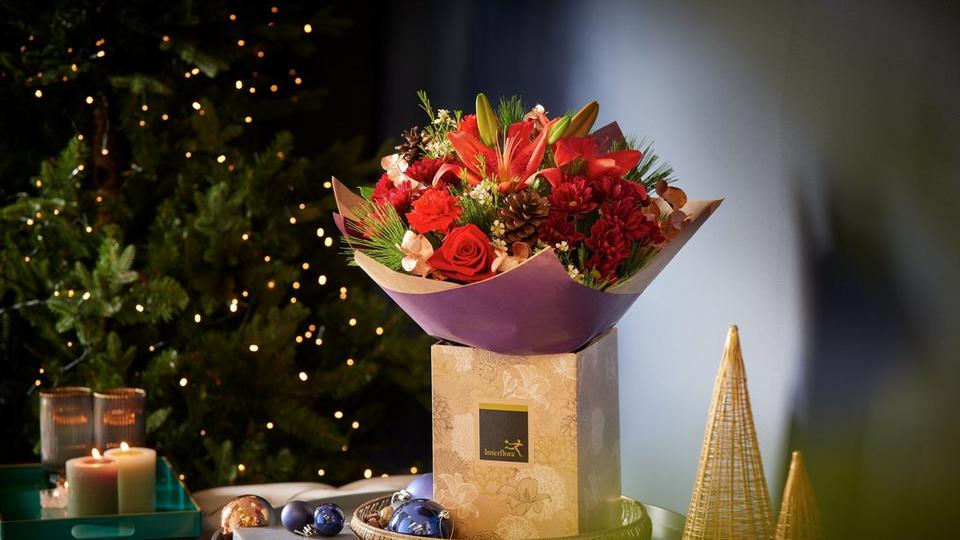The Ultimate Guide to Christmas Cactus
Read time - 8 mins

Have you encountered the Christmas cactus yet? This spiky winter wonder is known for displaying brights blooms in the coldest months, making it a firm favourite for cheering indoor decoration. One of our favourite winter houseplants, let’s get to know the lovely Schlumbergera (that’s the Latin or scientific name for the genus of plants usually known as Christmas cacti).
What is a Christmas cactus?
A quick intro to the Christmas Cactus
It’s part of the cactus family, a family of plants native to North and South America that known for their spikes and over their bright blooms – but here are over 2000 species of cactus, all with different qualities.
The Christmas cactus is also known as the Thanksgiving cactus, crab cactus or holiday cactus. It only grows naturally in Brazil where it can be found in shady spots on rocks or in woodlands. It was brough to Europe in the 1800s and has endured waves of popularity as a house plant or hot house plant ever since. It took on the name Christmas cactus because in the northern hemisphere it flowers during the holiday.
Some quick FAQs
They have broad flat rich green leaves and usually have spikey pink flowers, but there are a few different types each with their own unique characteristics.
What a cactus signifies all depends on the culture appraising it. But to many, cacti symbolise strength, resilience and endurance (perhaps something to do with all those spikes!)
We love that it blooms in the depths of winter in the UK, the bright pink or red flowers bring warmth and hope for sunnier months ahead.
The family Schlumbergera covers off lots of plants, and you can split them into ’varieties and ‘cultivars’. A variety is a species of plant that has occurred naturally, whereas a cultivar has been created by humans selectively breeding plants together.
To tell the difference between types of Christmas cactus, you’ll need examine the differences in the shapes of the leaves, and look out for minor differences in the flowers. You might come across:
- Schlumbergera truncata – the most common species of Christmas cactus, and the one your house plant is likely to be. It has quite wide leaves and usually has yellow pollen.
- Schlumbergera x buckleyi – a blend of two other varieties of Christmas cactus, it’s leaf is quite sculpted and its flowers usually feature pink pollen.
- Schlumbergera brigesii – this one has lovely scalloped edged leaves and you’ll find types that have white, pink, orange or red flowers.
And we’re going to throw in a bonus kind here, the Schlumbergera gaertneri or Rhipsalidopsis gaertneri. It looks very similar to the Christmas cactus but flowers later, so it’s known as the Easter cactus (although exactly when it flowers all depends on where the plant is kept). You can get kinds with a whole range of flower colours including red, white, orange, pink, peach and lavender.
Where to put a Christmas cactus
Inside, somewhere warm and humid, out of direct sun. A bathroom is a good option so they can get a bit of steamy goodness. They like temperatures between 18-23 °C and humidity of around 50-60% if you really want to get technical.
When to water a Christmas cactus
Cacti are great at storing water, so they don’t need a drink every day. Aim to water them once every one to three weeks, depending on how dry the air in your home is. Remember a Christmas catus would usually group on a rock with its roots exposed – never sitting in water, so if you soak them too much they’ll get very unhappy.
What soil to use for a Christmas cactus
Use a potting soil mix that’s designed for houseplants or cacti. Always choose peat free compost and try and get organic if you can. You should feed your Christmas cactus with cactus feed (you can buy it from a garden centre or online) once it’s flowered.
Where to prune a Christmas cactus
To make your cactus bushier you can remove sections of the leaves. Wait until spring or summer, when the cactus has finished flowering and then remove sections of leave at the joint. Gently twist them away (or snip them with secateurs) to reduce the size of the plant or to shape it.
Should you deadhead a Christmas cactus
Deadheading is just removing dead or fading flowers. Gently pull any dead flowers from your Christmas cactus and pop them in the compost, this can help the plant keep blooming.
How to take a cutting from a Christmas cactus
Feeling inspired?
Looking for more festive ideas? Check out our for more inspiration. Nail that gift swap and give them something that’ll brighten up their Christmas and end their year on a high note.
Looking for Christmas gift ideas?
Our one stop Christmas shop is bursting with inspiration to make that to-do list smaller.
Christmas Cactus FAQs
- Too much water. Check if the soil is wet, if it is you might be overwatering your Christmas cactus. Make sure you let it dry out between waterings.
- Too little water. If the soil is bone dry beneath the surface of the pot, give your cactus a drink.
- Too much or too little light – the Christmas cactus doesn’t like direct sun, but it does need some light so try and find the right balance.
- Too small a pot – check the plants roots, if they’re bursting out of the soil or tangled around the pot, your cactus needs more space so pop it with more soil in a bigger container.
Too much water. Black leaves on a Christmas cactus means overwatering.
Christmas Cactus can suffer with mealybugs that look a bit like a white substance on the plant. The bugs suck the sap from the cacti, which can kill the plant. They can also suffer from fungus gnats which cause root damage to the plant.
The best way to deal with these is to try and avoid an infestation to begin with Make sure you keep your Christmas cactus in good condition to avoid any bugs. If you do find you’ve ended up with them it can often be easier to compost the plant to avoid spreading the bugs elsewhere or using harmful pesticides. For more help the RHS has some very thorough guides on sap feeding insects.
Plants in the Schlumbergera family can flower twice a year, however, sometimes the plants need a bit of encouragement to bloom, especially for the second flowering.
Getting the Christmas cactus to flower all depends on the right light levels and temperatures. A couple of months before you want blooms on your plant, make sure the plant has the following:
- 12-14 hours of darkness every 24-hour period
- A room temperature of between 10 and 15 °C
Then reduce the amount you water and you should start to get buds start to form. Once you have buds gradually increase the light, temperature and watering to the normal levels, so you won’t stress your cactus out while it blooms.



